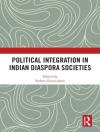This book gives a survey of characteristics as well as developmental stages of the Georgian society as it is distilled in its science, religion, and culture. The first chapter discusses the pre-Christian period and acquaints readers with fundamental characteristics of a developed, highly cultured society that existed in the Georgian territory and achieved significant results in agriculture, metallurgy, and political structure together with a long-lasting and intensive connection with the outside world. The second chapter considers the contribution of the Christian religion to the formation of the Georgian nation in early medieval centuries and beyond. This chapter covers in much detail various monasteries and church complexes that existed within the country’s territory and outside of it, thus providing a working mechanism for intellectual, spiritual, and educational progress. This chapter also focuses on several important monastic leaders and their contributions. The third chapter describes the Golden Age of Georgia, which begins with the accession to the throne of the Bagrationi dynasty in the 9th century and reaches its peak in 12th and 13th centuries. At this time, simultaneously with the positive political and economic developments inside the country, powerful intellectual processes took place that this chapters covers in full. As an example, numerous translations of secular and religious literature are made, and the masterpiece of the poem "Vepkhistkaosani", written by Shota Rustaveli, was written. The fourth chapter examines the interrelation of the European Renaissance and the Georgian culture. As elsewhere in the world, the Renaissance in Georgia brought a new theoretical premise for creating a new type of civilization. Humanistic values, scientific explanation of facts, and the discovery of modern understanding determined the future of all mankind. Under the influence of this process, Georgian literature, philosophy, and Georgian thinkers took their special place in Georgia as well as in Russia. The last chapter describes the more difficult years of Georgia as it slowly began losing its independence until being fully absorbed – first into the Russian and later into the Soviet – Empires. In the 19th century, despite the deeply mourned loss of statehood, Georgia underwent an intense period of national self-awareness. This internal struggle was followed by a serious result. For a brief period of independence (1918-1921), the national university was opened and thus the foundation was laid for the development of the more modern tendencies of culture and science. Despite being a small part of the socialist world, Georgian people accomplished a great deal in all spheres of public life: educational and research institutions were opened, and literature, art and sport flourished like never before. In 1941, the Georgian Academy of Sciences (since 2008, renamed the National Academy of Science) was established. Today, despite certain post-Soviet difficulties Georgia is firmly building its future as an inherent part of Europe.
Giorgi Kvesitadze
Science, Religion and Culture of Georgia: A Concise and Illustrated History [PDF ebook]
Science, Religion and Culture of Georgia: A Concise and Illustrated History [PDF ebook]
Придбайте цю електронну книгу та отримайте ще 1 БЕЗКОШТОВНО!
Мова Англійська ● Формат PDF ● Сторінки 125 ● ISBN 9781536128208 ● Видавець Nova Science Publishers ● Опубліковано 2020 ● Завантажувані 3 разів ● Валюта EUR ● Посвідчення особи 7217483 ● Захист від копіювання Adobe DRM
Потрібен читач електронних книг, що підтримує DRM












